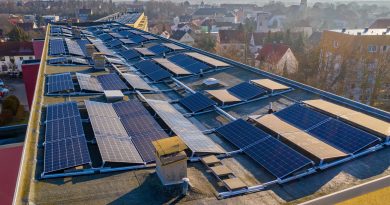How many trees are saved by solar panels
Solar panels have emerged as a key technology in the fight against climate change, offering a sustainable alternative to traditional energy sources that contribute significantly to environmental degradation. This blog post will explore the environmental benefits of solar panels, particularly their potential to reduce deforestation and mitigate the carbon footprint of traditional energy sources. We’ll also discuss the concept of carbon offsetting and how solar panels contribute to it, along with real-world examples of successful solar energy projects.
Table of Contents
- 1 The Environmental Impact of Traditional Energy Sources
- 2 The Role of Solar Panels in Reducing Greenhouse Gas Emissions
- 3 Carbon Offsetting and Its Benefits
- 4 The Connection Between Solar Energy and Deforestation
- 5 Case Studies of Solar Projects and Their Environmental Impact
- 6 The Future of Solar Power and Its Potential to Protect Forests
- 7 Addressing Common Misconceptions About Solar Panels and the Environment
- 8 The Importance of Sustainable Energy Solutions
- 9 Comparison of Solar Energy vs. Traditional Energy Sources
- 10 Conclusion
- 11 FAQ Section
The Environmental Impact of Traditional Energy Sources
Fossil Fuels and Greenhouse Gas Emissions
- Carbon Emissions: Traditional energy sources like coal, oil, and natural gas are major contributors to greenhouse gas emissions. Burning fossil fuels releases carbon dioxide (CO2), a leading cause of global warming.
- Air Pollution: The combustion of fossil fuels also produces harmful pollutants such as sulfur dioxide, nitrogen oxides, and particulate matter, leading to air quality issues and health problems.
Deforestation and Energy Production
- Land Use: Extracting fossil fuels often requires large tracts of land, leading to deforestation and habitat destruction. In many cases, forests are cleared to make way for mining operations, oil extraction, and infrastructure development.
- Biodiversity Loss: Deforestation caused by energy production disrupts ecosystems, leading to a loss of biodiversity and the extinction of species that rely on forest habitats.
The Role of Solar Panels in Reducing Greenhouse Gas Emissions
Zero-Emission Energy
- Solar Energy: Solar panels generate electricity by converting sunlight into energy, a process that produces no greenhouse gas emissions. By replacing fossil fuels with solar power, we can significantly reduce the carbon footprint of energy production.
- Energy Independence: Solar panels allow individuals and communities to produce their own clean energy, reducing reliance on centralized power plants that often rely on fossil fuels.
Long-Term Impact
- Lifecycle Emissions: The carbon footprint of solar panels is minimal when considering their entire lifecycle. While manufacturing and installation do involve some emissions, these are offset by the clean energy generated over the panels’ 25-30 year lifespan.
- Scalability: Solar energy can be deployed on various scales, from small residential systems to large utility-scale solar farms, making it a versatile solution for reducing greenhouse gas emissions.
Carbon Offsetting and Its Benefits
Understanding Carbon Offsetting
- Definition: Carbon offsetting involves compensating for emissions by investing in projects that reduce or remove CO2 from the atmosphere, such as reforestation, renewable energy projects, or energy efficiency initiatives.
- How Solar Contributes: Solar panels contribute to carbon offsetting by displacing the need for fossil fuel-based electricity. Each kilowatt-hour (kWh) of solar energy produced reduces the amount of CO2 that would have been emitted by traditional power sources.
Financial and Environmental Benefits
- Economic Incentives: Many governments and organizations offer carbon credits or financial incentives for individuals and businesses that install solar panels. These credits can be sold or used to offset other emissions, making solar power economically beneficial.
- Environmental Preservation: Carbon offsetting through solar energy reduces the pressure on forests, which are often cleared for energy production or to make space for other carbon-intensive industries.
The Connection Between Solar Energy and Deforestation
Reducing the Need for Deforestation
- Land Use Efficiency: Solar panels can be installed on rooftops, parking lots, and other built environments, minimizing the need for additional land and reducing the pressure to clear forests for energy production.
- Preserving Forests: By decreasing the demand for fossil fuels, solar energy helps preserve forests that would otherwise be cleared for coal mining, oil drilling, or natural gas extraction.
Solar Farms and Land Use
- Dual-Use Solar Farms: Some solar farms are designed to coexist with agricultural activities (agrivoltaics) or are placed on degraded lands, ensuring that forests and natural habitats are left undisturbed.
- Sustainable Development: Solar energy projects that prioritize land conservation and community engagement can contribute to sustainable development, balancing energy production with environmental protection.
Case Studies of Solar Projects and Their Environmental Impact
Case Study 1: Solar Power in Kerala, India
- Project Overview: The Cochin International Airport in Kerala became the world’s first fully solar-powered airport in 2015.
- Environmental Impact: The project has eliminated approximately 300,000 metric tons of CO2 emissions over 25 years, equivalent to planting 3 million trees. The airport’s use of existing infrastructure for solar panel installation also minimized land use impacts.
Case Study 2: Solar Energy in California, USA
- Project Overview: The Ivanpah Solar Electric Generating System in California is one of the largest solar thermal power plants in the world.
- Environmental Impact: The plant generates enough electricity to power 140,000 homes, reducing CO2 emissions by 400,000 tons annually. The project also incorporated wildlife conservation measures to protect local species and habitats.
The Future of Solar Power and Its Potential to Protect Forests
Innovations in Solar Technology
- Bifacial Panels: These panels capture sunlight from both sides, increasing efficiency and reducing the land area needed for large solar farms.
- Floating Solar Farms: By placing solar panels on bodies of water, floating solar farms reduce the need for land, preserving forests and other natural habitats.
Global Initiatives and Partnerships
- RE100 Initiative: Many global companies are committing to 100% renewable energy through the RE100 initiative, driving demand for solar energy and reducing the carbon footprint of industries that have historically contributed to deforestation.
- Partnerships with Conservation Groups: Solar energy companies are increasingly partnering with environmental organizations to ensure that solar projects are developed in ways that protect forests and promote biodiversity.
Addressing Common Misconceptions About Solar Panels and the Environment
Misconception 1: Solar Panels Are Harmful to the Environment
- Reality: While manufacturing solar panels does produce some emissions, the environmental benefits of solar power far outweigh these initial impacts. Over their lifespan, solar panels reduce CO2 emissions and help preserve natural ecosystems.
Misconception 2: Solar Farms Cause Deforestation
- Reality: Most solar farms are strategically located on degraded land, rooftops, or non-arable land. With careful planning and the use of innovative technologies like floating solar farms, the impact on forests can be minimized.
The Importance of Sustainable Energy Solutions
Combating Climate Change
- Reducing Emissions: Transitioning to solar energy is a critical step in reducing global greenhouse gas emissions and combating climate change.
- Sustainable Development Goals: Solar energy contributes to several UN Sustainable Development Goals (SDGs), including affordable and clean energy, climate action, and life on land.
Encouraging Adoption
- Public Awareness: Educating the public about the environmental benefits of solar panels can encourage widespread adoption, reducing reliance on fossil fuels and protecting forests.
- Government Support: Policymakers play a vital role in promoting solar energy through incentives, subsidies, and regulations that encourage sustainable practices.
Comparison of Solar Energy vs. Traditional Energy Sources
| Factor | Solar Energy | Traditional Energy (Fossil Fuels) |
|---|---|---|
| Carbon Emissions | Zero emissions during operation | High emissions during extraction and use |
| Land Use | Can be installed on existing structures | Often requires deforestation and habitat loss |
| Energy Source | Renewable and abundant (sunlight) | Non-renewable and depleting (coal, oil, gas) |
| Impact on Forests | Minimal, especially with strategic placement | Significant, due to land clearing for extraction |
| Long-Term Sustainability | High, with ongoing technological improvements | Low, with finite resources and environmental degradation |
Conclusion
Solar panels offer significant environmental benefits, including the potential to reduce deforestation and combat climate change. By transitioning to solar energy, we can decrease our reliance on fossil fuels, protect natural habitats, and contribute to a more sustainable future. Through continued innovation and the adoption of sustainable energy solutions, solar power can play a critical role in preserving our planet for future generations.
FAQ Section
1. How do solar panels help reduce deforestation?
Solar panels reduce the need for fossil fuel extraction, which often leads to deforestation. By generating clean energy, solar panels help preserve forests and natural habitats.
2. What is the carbon footprint of solar panels compared to fossil fuels?
The carbon footprint of solar panels is significantly lower than that of fossil fuels. While manufacturing panels does produce some emissions, the clean energy generated over their lifetime more than offsets this initial impact.
3. Can solar farms coexist with natural habitats?
Yes, with proper planning and the use of innovative technologies like floating solar farms and dual-use solar farms (agrivoltaics), solar energy can be generated without disturbing natural habitats.
4. What are the environmental benefits of switching to solar energy?
Solar energy reduces greenhouse gas emissions, preserves forests and biodiversity, and decreases reliance on finite fossil fuels, contributing to long-term environmental sustainability.
5. Are there any government incentives for adopting solar energy?
Many governments offer incentives such as tax credits, subsidies, and rebates for installing solar panels. These incentives make solar energy more affordable and encourage widespread adoption.



